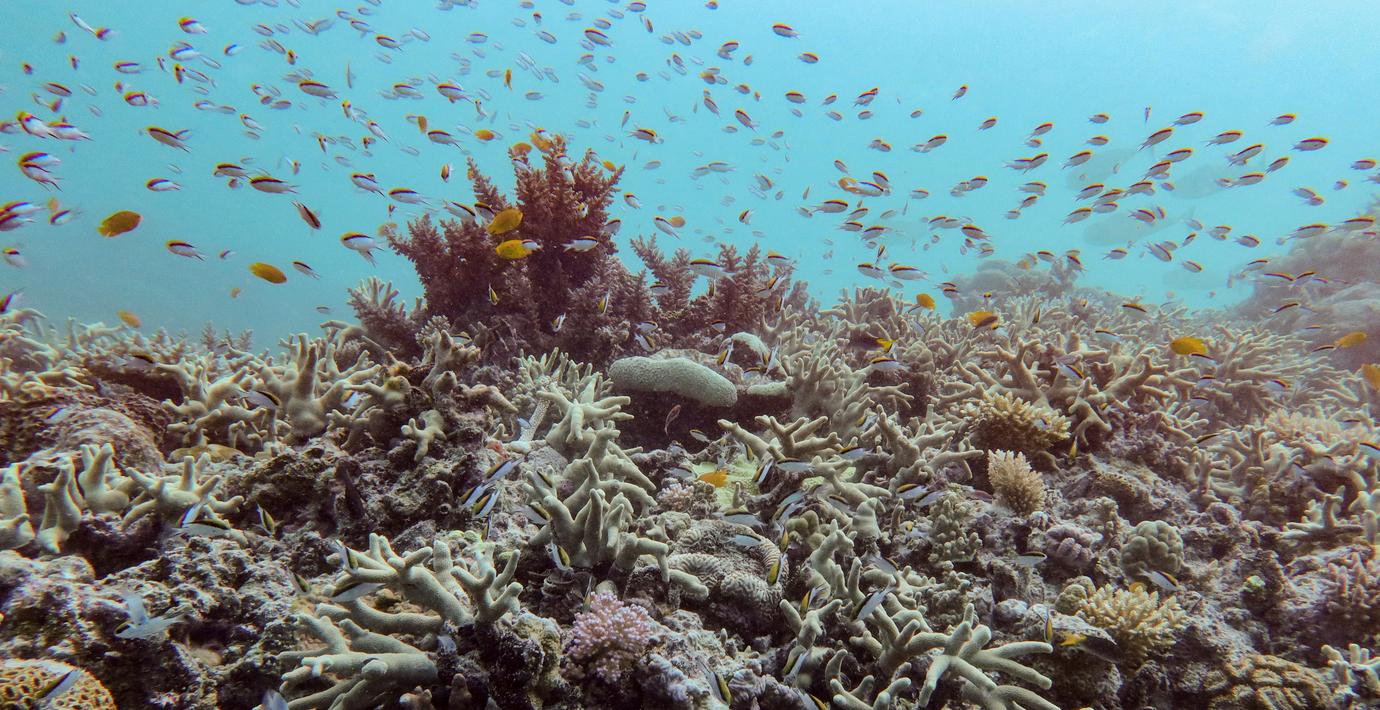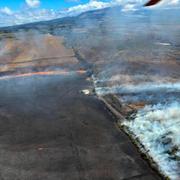
Klimatforskare: Korallreven är bortom räddning
En av de första av klimatets så kallade tippningspunkter har passerats. Det rapporterar flera medier med hänvisning till en ny forskarrapport som hävdar att korallreven i varma vatten kommer att dö ut för alltid med nuvarande nivå av uppvärmning.
– Vi tror tyvärr att merparten av korallreven kommer att dö, säger Tim Lenton, professor vid Exeteruniversitetet, till Ekot.
Enligt forskarna skulle den globala uppvärmningen behöva sjunka till högst en grad för att korallreven ska ha en chans att överleva. I nuläget är uppvärmningen på 1,4 grader.
I rapporten skriver forskarna att risken har ökat för att världen ska passera andra tippningspunkter. Det handlar bland annat om inbromsningen av golfströmmen och massdöd i Amazonas regnskog.
bakgrund
Tippningspunkter för klimatet
Wikipedia (en)
In climate science, a tipping point is a critical threshold that, when crossed, leads to large, accelerating and often irreversible changes in the climate system. If tipping points are crossed, they are likely to have severe impacts on human society and may accelerate global warming. Tipping behavior is found across the climate system, for example in ice sheets, mountain glaciers, circulation patterns in the ocean, in ecosystems, and the atmosphere. Examples of tipping points include thawing permafrost, which will release methane, a powerful greenhouse gas, or melting ice sheets and glaciers reducing Earth's albedo, which would warm the planet faster. Thawing permafrost is a threat multiplier because it holds roughly twice as much carbon as the amount currently circulating in the atmosphere.
Tipping points are often, but not necessarily, abrupt. For example, with average global warming somewhere between 0.8 °C (1.4 °F) and 3 °C (5.4 °F), the Greenland ice sheet passes a tipping point and is doomed, but its melt would take place over millennia. Tipping points are possible at today's global warming of just over 1 °C (1.8 °F) above preindustrial times, and highly probable above 2 °C (3.6 °F) of global warming. It is possible that some tipping points are close to being crossed or have already been crossed, like those of the West Antarctic and Greenland ice sheets, the Amazon rainforest and warm-water coral reefs. A 2022 study published in Science found that exceeding 1.5 °C of global warming could trigger multiple tipping points, including the collapse of major ice sheets, abrupt thawing of permafrost, and coral reef die-off, with potential for cascading system effects.
A danger is that if the tipping point in one system is crossed, this could cause a cascade of other tipping points, leading to severe, potentially catastrophic, impacts. Crossing a threshold in one part of the climate system may trigger another tipping element to tip into a new state. For example, ice loss in West Antarctica and Greenland will significantly alter ocean circulation. Sustained warming of the northern high latitudes as a result of this process could activate tipping elements in that region, such as permafrost degradation, and boreal forest dieback.
Scientists have identified many elements in the climate system which may have tipping points. As of September 2022, nine global core tipping elements and seven regional impact tipping elements are known. Out of those, one regional and three global climate elements will likely pass a tipping point if global warming reaches 1.5 °C (2.7 °F). They are the Greenland ice sheet collapse, West Antarctic ice sheet collapse, tropical coral reef die off, and boreal permafrost abrupt thaw.
Tipping points exist in a range of systems, for example in the cryosphere, within ocean currents, and in terrestrial systems. The tipping points in the cryosphere include: Greenland ice sheet disintegration, West Antarctic ice sheet disintegration, East Antarctic ice sheet disintegration, arctic sea ice decline, retreat of mountain glaciers, permafrost thaw. The tipping points for ocean current changes include the Atlantic Meridional Overturning Circulation (AMOC), the North Subpolar Gyre and the Southern Ocean overturning circulation. Lastly, the tipping points in terrestrial systems include Amazon rainforest dieback, boreal forest biome shift, Sahel greening, and vulnerable stores of tropical peat carbon.
Omni är politiskt obundna och oberoende. Vi strävar efter att ge fler perspektiv på nyheterna. Har du frågor eller synpunkter kring vår rapportering? Kontakta redaktionen


